In recent years, the tiny home movement has gained tremendous momentum as more people opt for a minimalist lifestyle. A tiny home is more than just a compact space; it is a carefully designed oasis that brings together functionality, comfort, and beauty. While tiny homes may appear modest from the outside, the interior often tells a completely different story. In this article, we’ll explore how a gorgeous tiny home interior can transform a small living space into a cozy yet stylish sanctuary.
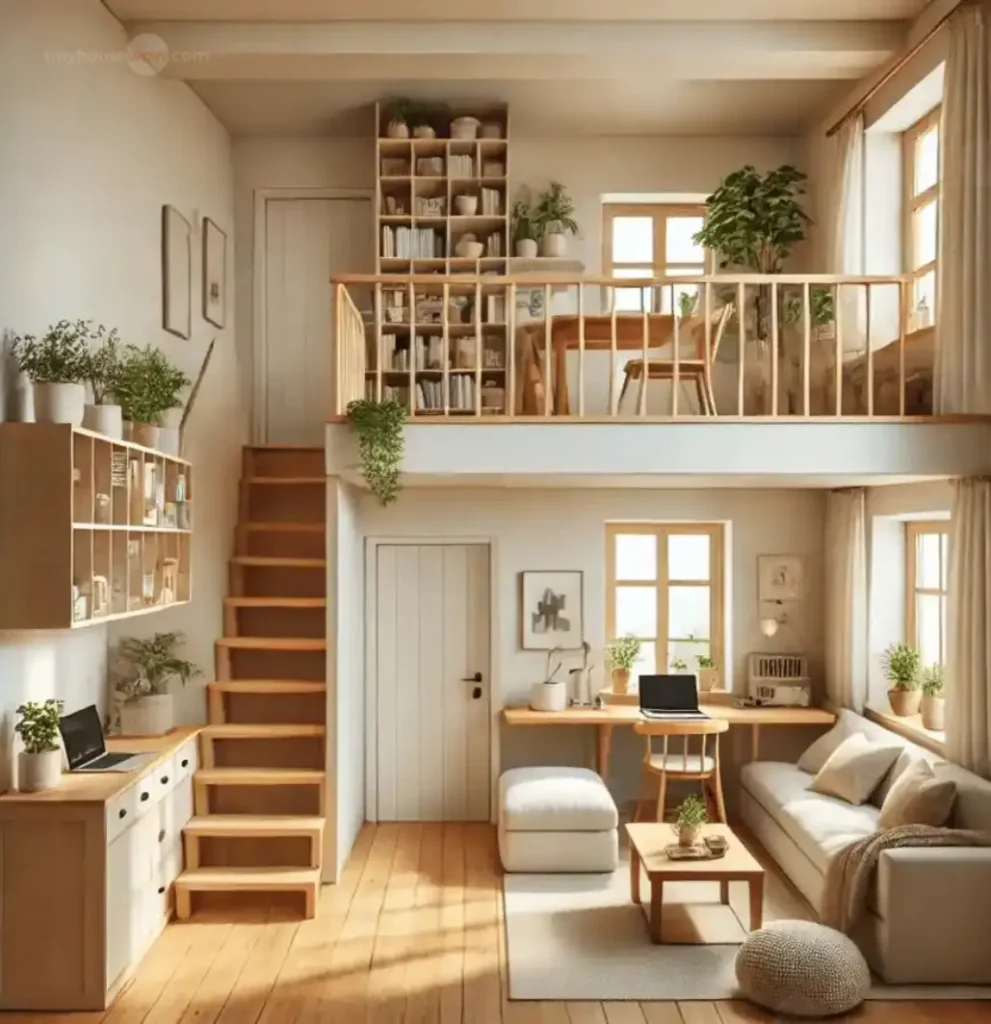

The Appeal of Tiny Homes
The allure of the tiny home isn’t just in its size, but in the thoughtful use of every square inch. These compact dwellings allow for financial freedom, mobility, and a reduced carbon footprint. But what truly sets a tiny home apart is the attention to interior design details. Each area is carefully crafted to ensure that, despite its small size, the home feels spacious, organized, and welcoming.
For those who value design and aesthetics, creating a beautiful tiny house interior offers the perfect blend of form and function. Every room, whether it’s the kitchen, living area, or bedroom, must serve multiple purposes, making smart design choices essential.
👉 Discover how less can truly be more in our roundup of Top 25 Tiny Houses for 2025.
Clever Space Utilization: The Heart of Tiny Home Interiors
The first principle of a stunning tiny house interior is efficient space utilization. Without an excess of space, every design element should have a purpose. This means integrating built-in furniture, hidden storage compartments, and multifunctional items to maintain an uncluttered look.
Foldable and Multipurpose Furniture: One of the key elements in a tiny home is the use of foldable or multipurpose furniture. For example, a dining table might fold away when not in use, or a bed may double as a seating area during the day. These pieces ensure that the space remains open and flexible.
Vertical Storage Solutions: Tiny homes often capitalize on height rather than floor space. Interior designers for tiny houses use vertical shelving, lofts, and overhead compartments to store items, leaving the ground level free for daily activities. These techniques also help maintain a clutter-free environment, making the space feel larger than it is.
Hidden Storage: The creative use of hidden storage spaces is a hallmark of tiny house design. Whether it’s drawers tucked under the bed or storage built into the steps leading to a loft, these hidden compartments maximize every square inch.
Stylish Elements of a Gorgeous Tiny Home Interior
A tiny house interior doesn’t need to sacrifice style for practicality. In fact, many tiny homes have a stunning aesthetic that rivals larger houses. Achieving a beautiful design in a small space requires a careful balance of textures, colors, and materials.

Light and Bright Color Schemes: One way to make a small space feel larger is through the use of light and neutral colors. Whites, creams, and pastels reflect light, which helps make a tiny home appear more spacious. Adding pops of color in the form of cushions, rugs, or wall art can introduce warmth and personality without overwhelming the space.
Natural Materials: Many tiny homes feature natural materials such as wood, stone, and metal, which bring warmth and texture to the space. Wooden accents, whether on the floors, walls, or furniture, create a cozy, rustic feel that makes the home more inviting. In some cases, recycled or reclaimed materials are used, adding a sustainable and eco-friendly dimension to the design.
Open-Concept Layouts: When designing a tiny home, it’s crucial to avoid visual clutter and maintain an open feel. Instead of having walls or dividers between rooms, many tiny homes have an open-concept layout that blends the kitchen, living, and sleeping areas. This helps the space feel larger, as there are no physical barriers separating one area from the next.
Lighting: A Key Component of Tiny Home Interiors

Lighting plays a vital role in enhancing the ambiance of any tiny home interior. Natural light is especially important for small spaces, as it makes the home feel more open and airy. Many tiny homes are designed with large windows and skylights to let in as much light as possible. In addition to natural light, well-placed artificial lighting—such as recessed lighting, pendant lamps, and under-cabinet lighting—can create a cozy and inviting atmosphere.
Maximizing Natural Light: The best tiny homes incorporate large windows or glass doors to bring the outdoors in. This not only provides ample light during the day but also gives the illusion of a more expansive living area. Skylights are another fantastic option for increasing the amount of sunlight, especially in the loft or sleeping areas.
Layered Lighting: In addition to natural light, a well-designed tiny house interior utilizes different types of lighting to create mood and function. Task lighting, such as lamps or under-cabinet lights, is crucial for activities like cooking and reading, while ambient lighting can set a relaxing tone in the evening.
Personalizing Your Tiny Home Interior
Personal touches are what turn a house into a home, and tiny homes are no exception. Even though space is limited, there are plenty of opportunities to express your personal style through decor and accessories.
Art and Wall Decor: While you may not have room for large pieces of art or heavy furniture, smaller items can make a significant impact. Wall art, hanging plants, and framed photos can bring life to a space without taking up valuable real estate.

Soft Furnishings: Textiles such as throw pillows, rugs, and blankets are easy ways to add texture and warmth to your tiny house interior. They also offer a simple method for changing the look and feel of a space without the need for major renovations.
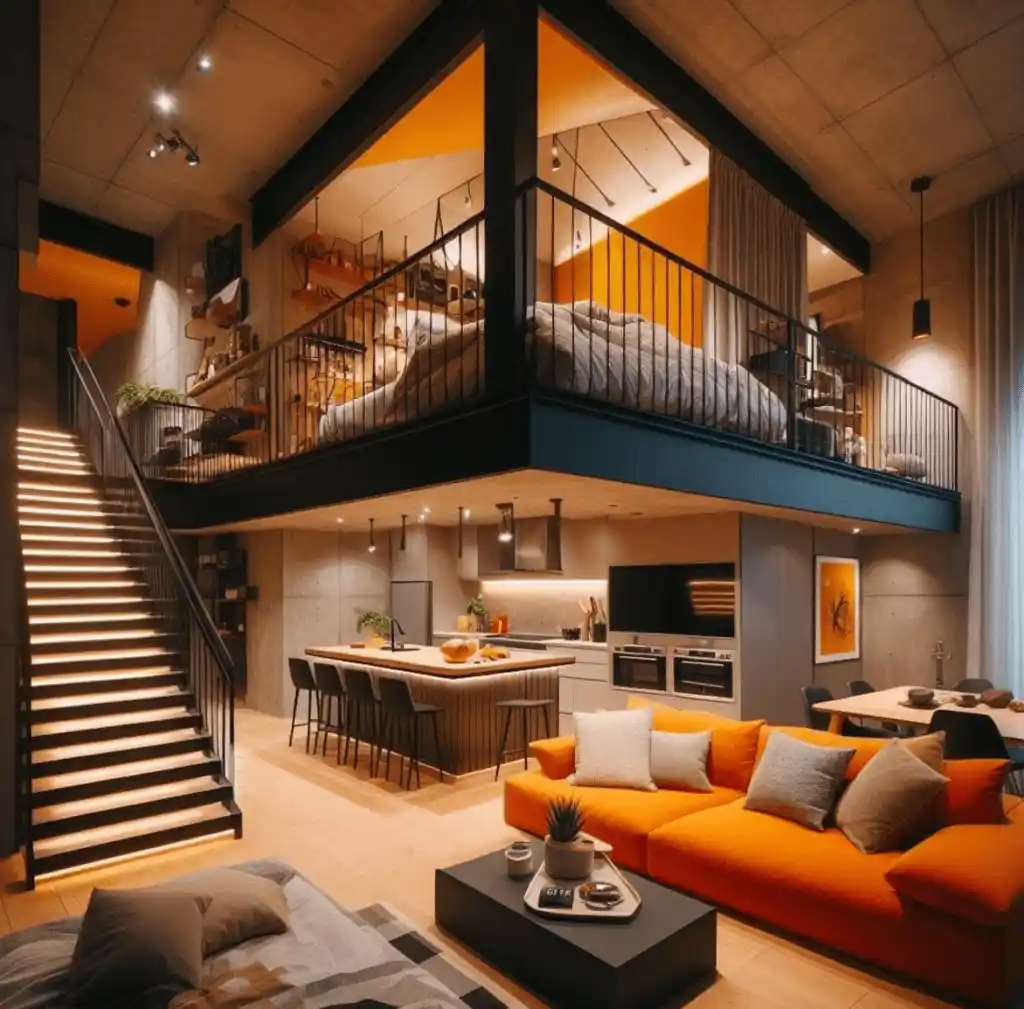
Smart Appliances and Gadgets: Tiny homes can be equipped with the latest smart technology, from space-saving appliances to automated lighting systems. Compact yet efficient appliances, such as two-in-one washer-dryers or mini-fridges, ensure that you don’t sacrifice modern conveniences in a small space.
Conclusion
Designing a tiny home with a gorgeous interior involves a balance of creativity, functionality, and style. By optimizing every inch of space, using versatile furniture, and incorporating clever storage solutions, you can turn even the smallest of homes into a beautiful and practical living space. With the right choices in color schemes, materials, and lighting, your tiny house interior will feel open, inviting, and personalized to suit your lifestyle.
In the world of compact living, it’s not about how much space you have—it’s about how you use it. A well-designed tiny home can be a testament to the fact that small spaces can be just as luxurious and comfortable as larger ones.
👉 Discover how less can truly be more in our roundup of Top 25 Tiny Houses for 2025.

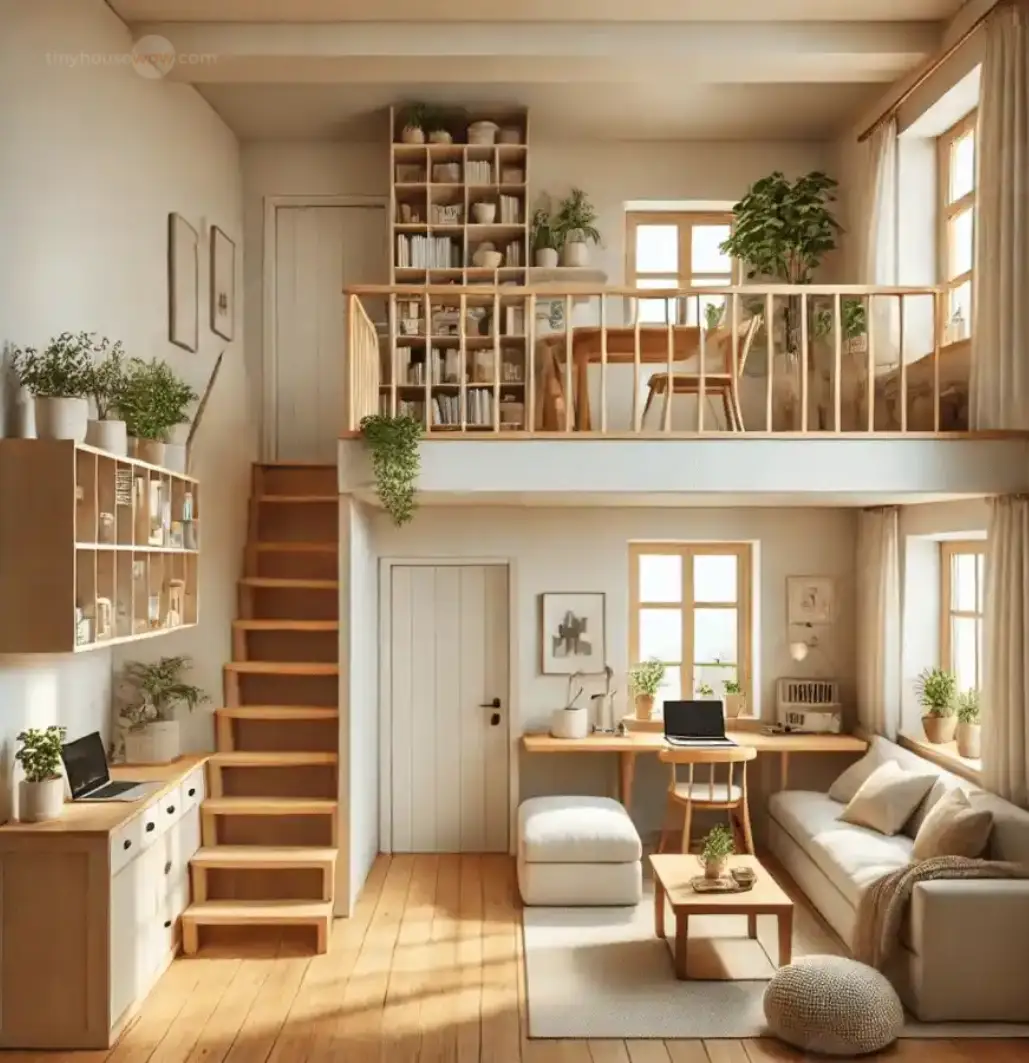

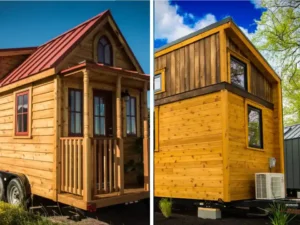
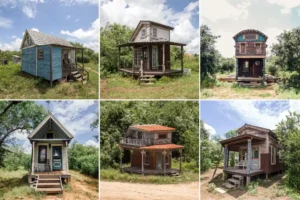
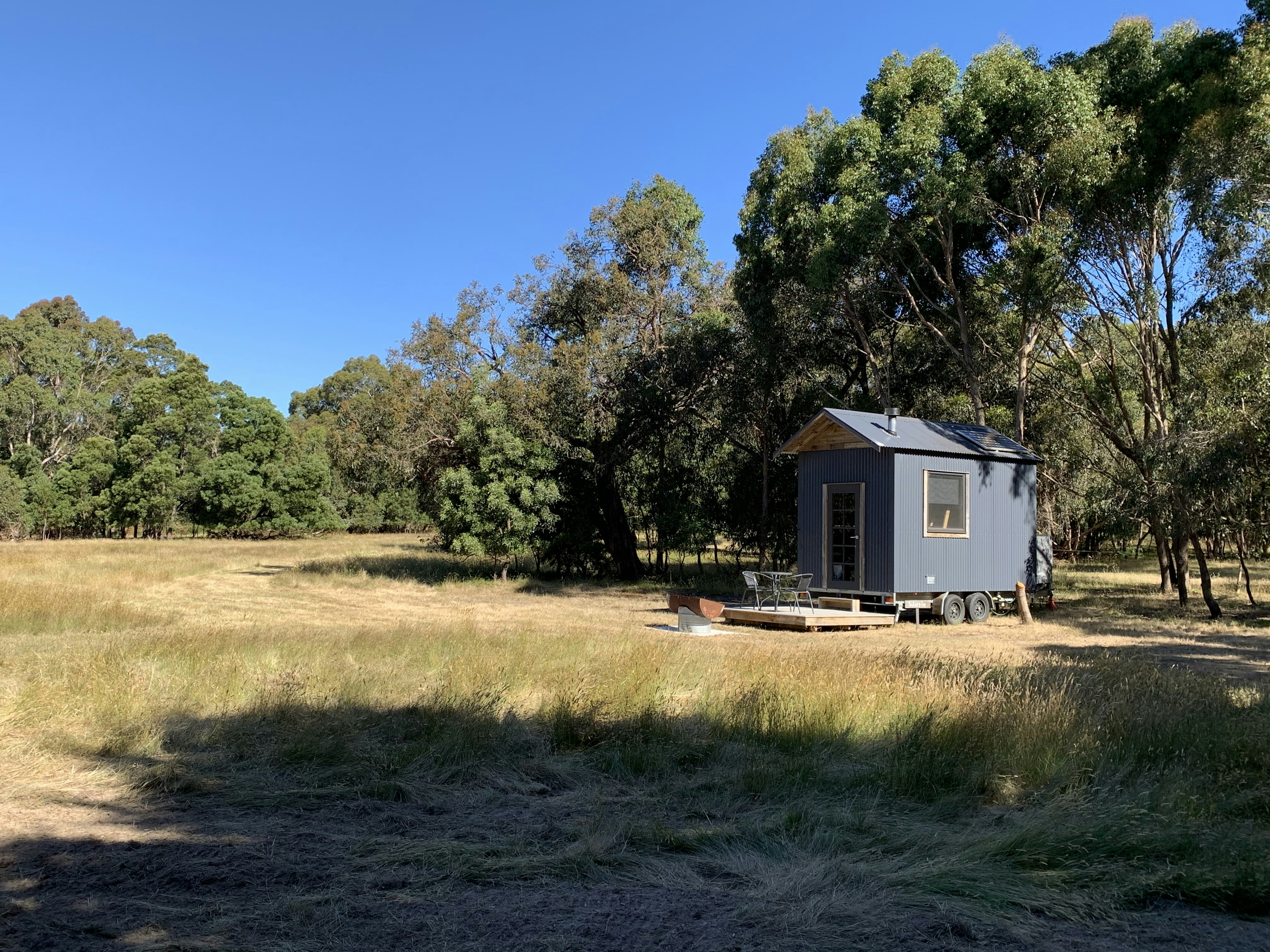
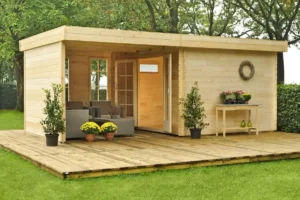
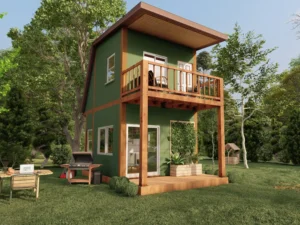
Wow a very nice tiny house, I’m so in love with this tiny beautiful house ❤️❤️❤️
THESE TINY HOUSES ARE PERFECT DESIGN FOR ME AND MY FRIEND AND OUR SERVICE DOGS WE WOULD LOVE A CHANCE TO BE ABLE LIVE AND IF YOU ARE WILLING TO TALK TO US ABOUT THIS THAT WOULD BE GREAT THANK YOU